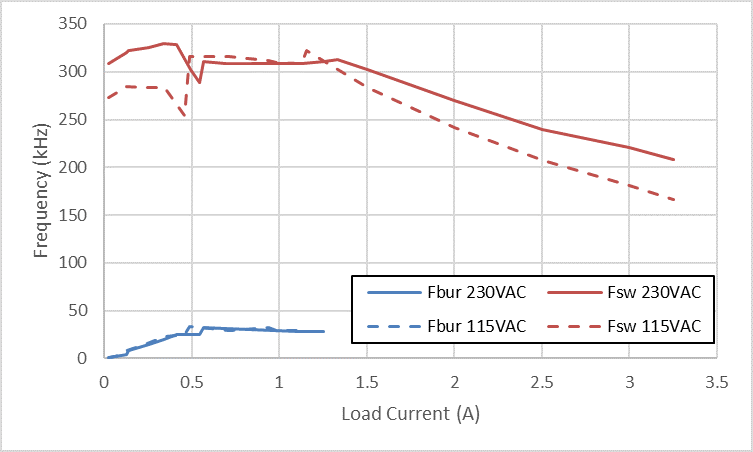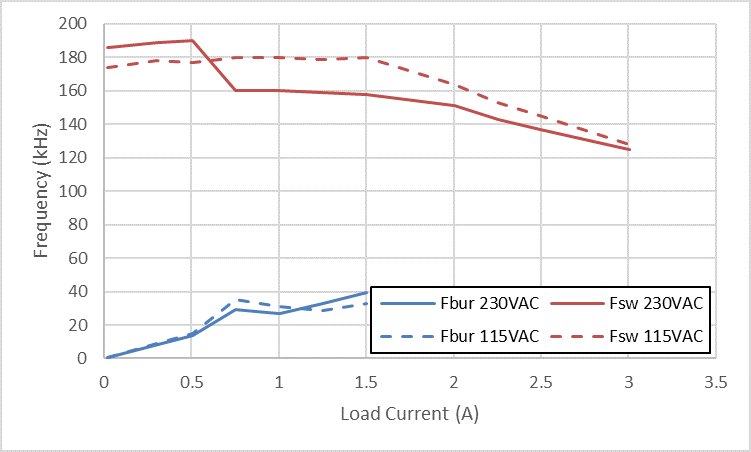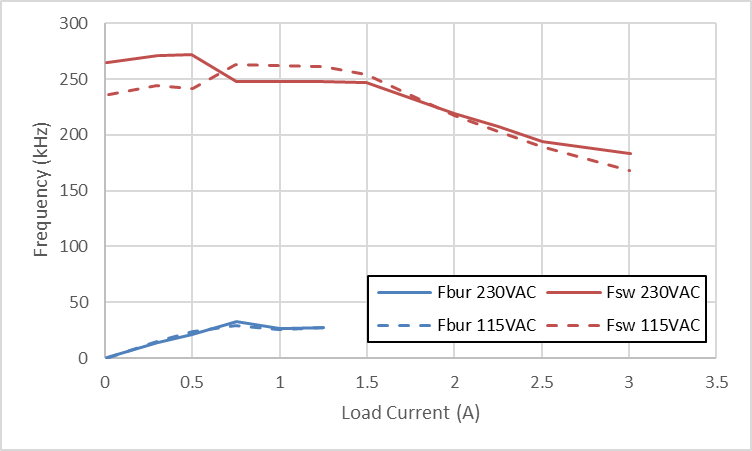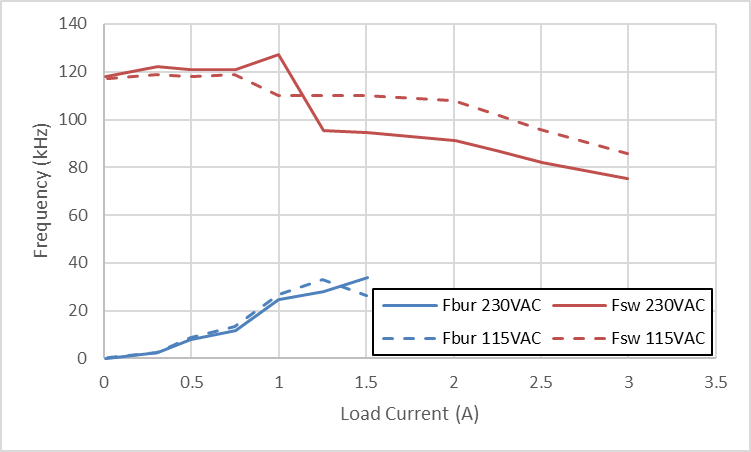TIDT239A April 2021 – July 2021
3.1 Switching Frequency
The switching frequency of the UCC28782 is variable due to the transition mode method of control. Frequency increases with decreasing load, and is higher with higher input voltages. The maximum frequency is limited at lighter loads by the adaptive burst mode of operation.
 Figure 3-1 20-V Switching and Burst Frequencies
Figure 3-1 20-V Switching and Burst Frequencies Figure 3-3 9-V Switching and Burst Frequencies
Figure 3-3 9-V Switching and Burst Frequencies Figure 3-2 15-V Switching and Burst Frequencies
Figure 3-2 15-V Switching and Burst Frequencies Figure 3-4 5-V Switching and Burst Frequencies
Figure 3-4 5-V Switching and Burst Frequencies